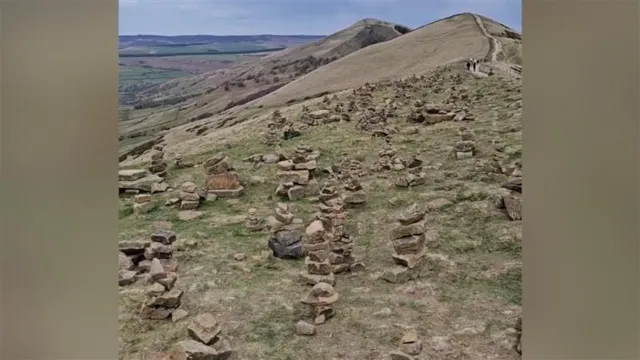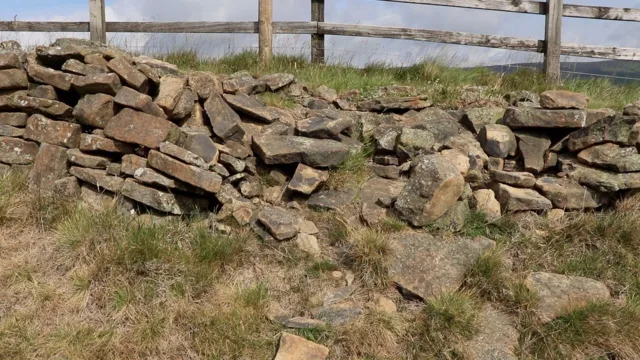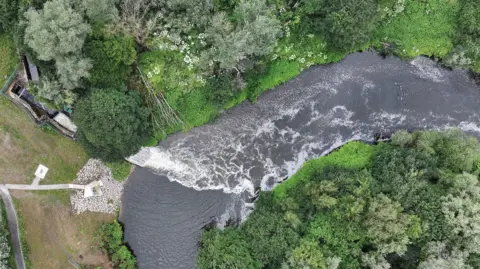Peak District Walker Sparks Debate by Dismantling Harmful Stone Stacks
The practice of constructing stone stacks in natural landscapes, particularly in picturesque areas like the Peak District, has ignited a passionate debate concerning environmental preservation and the impact of human activity on delicate ecosystems. Stuart Cox, a dedicated walker and local resident, has emerged as a vocal critic of these formations, arguing that they pose a significant threat to the region’s natural beauty and historical integrity. His recent actions, captured in a video where he is seen dismantling these man-made structures, have resonated widely across social media platforms, sparking crucial conversations about land stewardship, conservation efforts, and the broader consequences of our presence in the natural world.

Cox, a chartered engineer residing in Castleton, Derbyshire, has voiced strong concerns regarding the increasing prevalence of these stone stacks, some of which tower to an impressive 6 feet. He points out that many are built using stones dislodged from ancient boundary walls, citing the historic Peak Forest Wall, which dates back to 1579, as a prime example. Cox emphasizes that this removal of stones disrupts the vital habitats of small creatures, including frogs, toads, and insects, which depend on these structures for shelter and survival. His views are echoed by the Peak District National Park Authority, which categorizes the stacks as “detrimental” to the park’s cherished “special qualities” and its rich historical environment. The National Trust also shares these sentiments, actively dismantling stacks found on its land to safeguard the archaeological significance of sites like Mam Tor. Although park authority rangers typically intervene only when stacks present a danger or obstruct public rights of way, the consistent effort to preserve these historical sites is evident.

The controversy surrounding stone stacking is not confined to the Peak District; similar issues have been reported in other sensitive areas, including coastal locations in Scotland. Cox’s impactful video has sparked a polarized reaction on social media. While a significant number of viewers have voiced their agreement and support for his actions, a vocal contingent has expressed opposition, defending their right to construct these stacks. Cox has even reported receiving personal threats as a consequence of his activism, yet he remains undeterred. His core objective, he asserts, is to elevate consciousness and educate fellow outdoor enthusiasts about the ecological and historical damage inflicted by these artificial arrangements of stones.

The Countryside Code serves as a crucial reminder, advising visitors to “leave rocks, stone, plants and trees as you find them and take care not to disturb wildlife.” Cox’s controversial yet impactful actions underscore a growing recognition of the subtle yet profound effects human activities can have on the natural world. Through his advocacy, he aims to foster a deeper appreciation for the delicate equilibrium of the landscape, ultimately contributing to a reduction in the creation of these unnatural stone formations. The Peak District National Park Authority remains committed to preserving the region’s heritage and natural splendor, with ongoing discussions focused on the most effective strategies for managing and mitigating the impact of such practices.

The authority further notes that stones are sometimes removed from popular walking paths, potentially exacerbating erosion in already heavily trafficked areas. This concern aligns with the principles outlined in The Countryside Code, which advocates for leaving natural elements undisturbed. Anna Badcock, Cultural Heritage Manager at the national park authority, emphasized that these stone stacks are not only visually intrusive but also detrimental to the historic environment, which the authority is legally obligated to protect. She likened the snowball effect of creating one stack to encouraging others, thereby magnifying the issue.

Cox has made efforts to contact the landowners of the affected areas, offering assistance in rebuilding the original walls. Despite the divided opinions on social media, he remains hopeful that his campaign will foster a positive change in behavior. He shared, “I’m very passionate about the area… to see it being trashed, you know, it does rile you a bit.” His ultimate aim is to reach even a small number of people who might reconsider their actions, stating, “Even if a handful of people have realised the error of their ways, then that made it all the more worthwhile.” This sentiment underscores the individual impact one person can have in advocating for environmental consciousness.



Post Comment